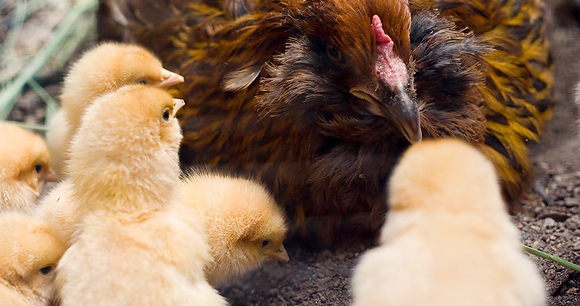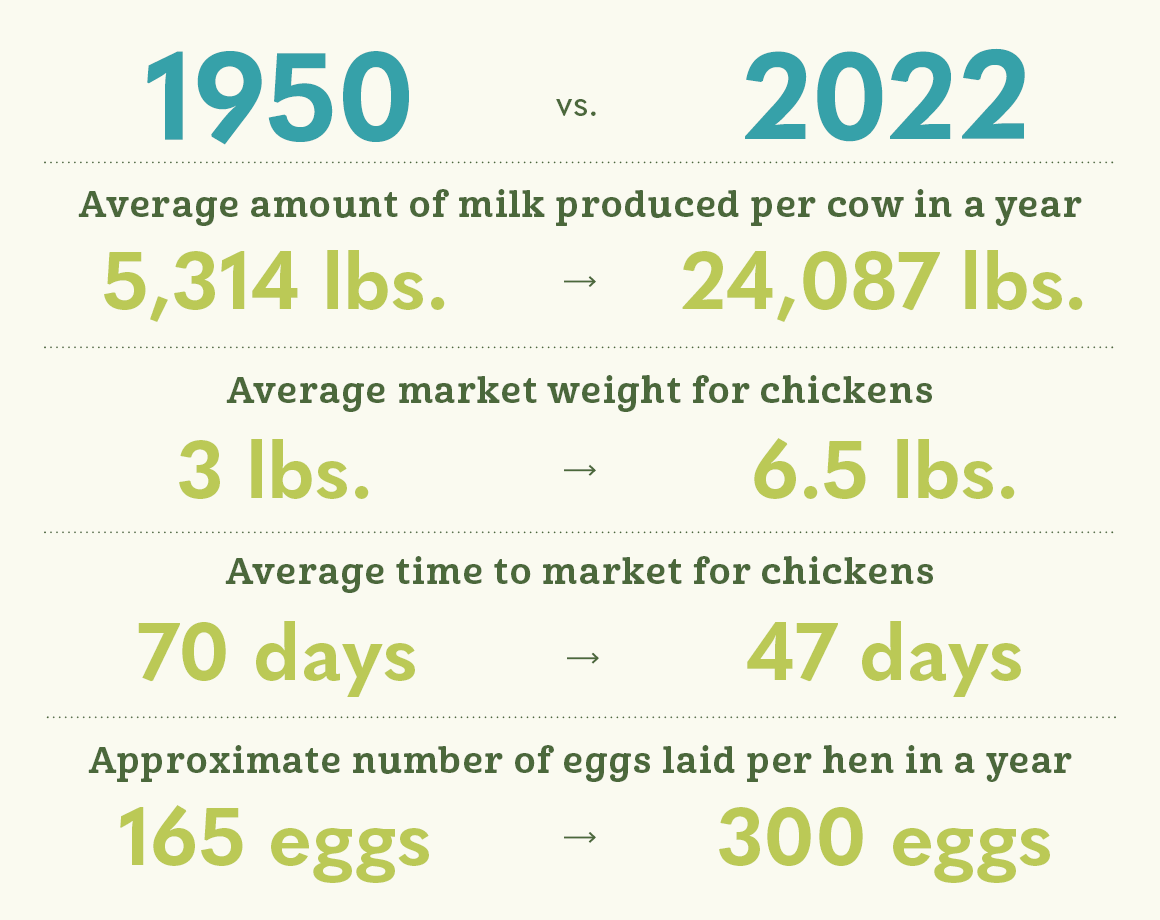
Industrial farming strives for consistency of product and volume of output. To that end, biodiversity of breeds and natural selection of hearty animals have given way to an emphasis on selecting for and institutionalizing a small handful of genetic traits that help maximize production and profit.

Maintaining a system based on these traits, however, comes at huge cost to the welfare of the animals. The attribute selected for maximum production and profit often go hand-in-hand with traits that greatly diminish the animals’ quality of life.
Examples:
- Dairy cows have been genetically selected to produce more milk. A modern dairy cow may produce up to 12 times the amount of milk needed to feed her calf. However, producing and carrying such vast quantities of milk is so stressful to the cow’s body that she is often lame and has difficulty moving around under the strain and weight.
- Chickens raised for meat have been genetically selected for rapid growth in order to allow a newly hatched chick to reach market weight in a matter of 6 or 7 weeks. Birds now grow so fast their organs and bones can hardly keep up. Many die from heart failure or other ailments as a result of the unnaturally fast growth rate, and countless more suffer from broken bones, lameness, and ruptured organs.
- Pigs, on the other hand, have been over-selected for lean meat, but studies have shown that the leaner pigs have flightier, more easily stressed temperaments, and therefore suffer more on industrial farms than would heavier animals with calmer dispositions.
In contrast to the breeding techniques of modern industrial farming, higher-welfare, pasture-based farms strive to breed animals who are healthy and hearty. Farmers use great care to secure appropriate breeds of animals who are not plagued with the welfare problems outlined above and are suited to a more natural life outdoors on pasture.